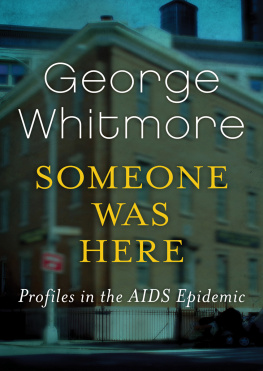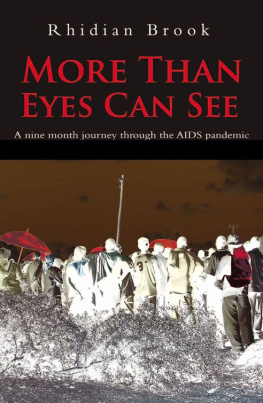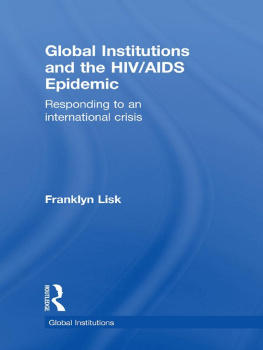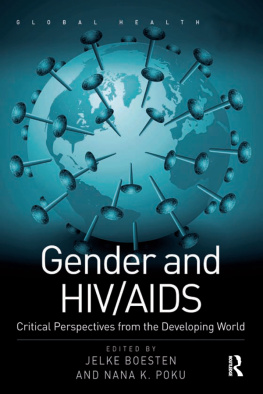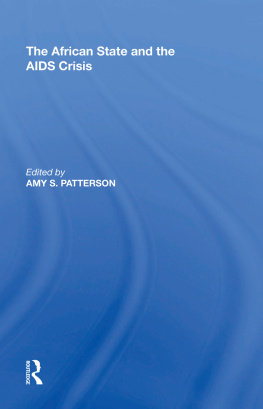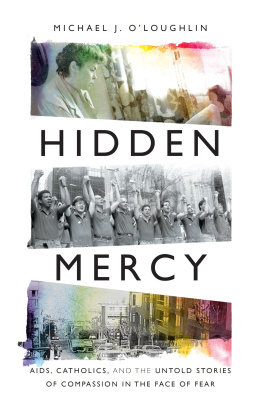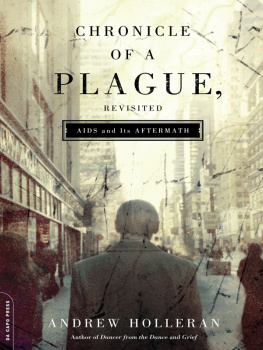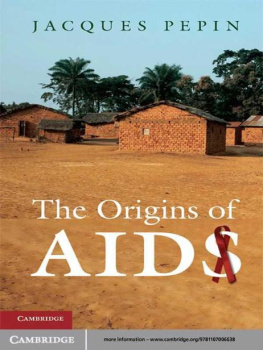28: STORIES OF AIDS IN AFRICA
BY THE SAME AUTHOR
Promised the Moon:
The Untold Story of the First Women in the Space Race
Shakespeare's Face
STORIES OF AIDS IN AFRICA
Stephanie Nolen

Copyright (c) 2007 by Stephanie Nolen
All rights reserved. No part of this book may be used or reproduced in any
manner whatsoever without written permission from the publisher except in the
case of brief quotations embodied in critical articles or reviews. For information
address Walker & Company, 104 Fifth Avenue, New York, New York 10011.
Published by Walker Publishing Company, Inc., New York
Distributed to the trade by Holtzbrinck Publishers
Photo credits: chapters 3, 5, 8,13,17,18, 23, 26: Stephanie Nolen; 1, 2,4, 6, 7, 9,10,11,12,
14,15,19, 21, 25, 28: John Morstad; 16, 22, 24: Patti Gower; 20, 27: Shayne Robinson.
All papers used by Walker % Company are natural, recyclable products made from
wood grown in well-managed forests. The manufacturing processes conform to the
environmental regulations of the country of origin.
LIBRARY OF CONGRESS CATALOGING-IN-PUBLICATION DATA HAS BEEN APPLIED FOR.
eISBN: 978-0-802-71876-1
Visit Walker % Company's Web site at www.walkerbooks.com
First U.S. edition 2007
1 3 5 7 9 10 8 6 4 2
Typeset by Westchester Book Group
Printed in the United States of America by Quebecor World Fairfield
CONTENTS
HIV/AIDS PREVALENCE IN SUB-SAHARAN AFRICA
28 STORIES ACROSS SUB-SAHARAN AFRICA
I looked at AIDS in Africa for a long time before I understood what I was seeing. That moment came on the shady porch of a small mud-brick house in a village called Nkothakota in Malawi, early in 2002. The house belonged to Lillian Chandawili. She was thirty-five years old, and I met her through the local AIDS organization. We sat in the softening heat of the late afternoon and she told me how she was raising her five children on her own; her husband was gone. She confided that she was plagued by diarrhea and a racking cough; some days she barely had the strength to lift a hoe, but her little plot of land was the only source of food for her family.
While we talked, Lillian's children ventured up to sit near us, and neighbors and relatives stopped by, polite and eager to greet a visitor. There were a great many children. Lillian explained that in addition to her five she was raising two of her late sister's children and two orphaned cousins. She laid one gentle hand on their heads as they crept in close"This one has it," she said. "And this one, I think he's infected." When the neighbors moved on, she gestured with a lift of her chin at one or another"She is infected. He is positive. Her husband is dying. He lost his wife."
And as I listened, I suddenly understood that it wasn't just Lillian and the dozen people in her support group in Nkothakota who had HIV. On paper, it was one in six adults in Malawi. But in this village, it was hundreds of people. If they weren't sick themselves, they were caring for the sick. They were sheltering their sisters' orphans, their dead brother's young wife and baby. One way or another, everyone had the disease. And it meant that they earned less, that they grew less food, that fewer children went to school, that no one had any savings. Lillian talked of all the people who had "passed," and I had a sense of a community quietly evaporating around me.
A few days later, in the Malawian capital Lilongwe, I set out early one morning for the main hospital, where the lone doctor had agreed to speak to me about the country's HIV epidemic. When I got to the hospital, however, no one was quite sure where he was, and people suggested I try one ward or another, check this corridor or that office. I wandered the halls in a state of growing horror. I had by that point seen many basic and overcrowded African hospitals, but never anything like this. There were people everywhere: three to a bed, lying head-to-foot-to-head; under the beds, lying on grass mats in the stairwells and in the verandas off the wards. They were bone thin and covered in lesions and abscesses. As I stepped gingerly among them, they shifted their heads slightly to look up at me through eyes grown huge in sunken faces. I could not find the doctor; I did find a nurseperhaps the only nursewho was stout and slovenly and clearly drunk, her hairpiece of copper curls askew. Looking around the ward, I couldn't blame her: it was barely 8 a.m., but I felt in desperate need of a stiff drink myself.
I had realized, long before that day, that AIDS was a unique and savage phenomenon in Africa. Back in 1998, in a rural hospital in Tanzania, the chief medical officer had led me on a tour of the wards. In one, we passed rows of antique but tidy beds lined up under billowy mosquito nets. Then we came to three men off by themselves, lying in a row on a thin mat on the floor. Their legs were like twigs, and their breathing was audible from the other side of the room. I was puzzled at first, and stopped in front of them. Then I realized what this must be.
"Do they have AIDS?" I asked.
The doctor and his assistants whipped around. A nurse seized my arm and began to pull me out of the ward.
"Shh, shh, shh," she scolded. "You can't just say that word." The sight of those men stayed with me. Over the next few years, I kept going back to Africa, drawn to what I began to believe was the biggest story in the world. Not the wars or the refugee crises that occasionallyvery occasionallymade the evening news back home, but the slow, almost incalculable devastation that HIV/AIDS was wreaking in country after country I visited.
I know a bit about what makes news. In the fifteen years I have worked as a journalist, I have reported on some of the biggest stories in the world. I watched Yasser Arafat and his Palestine Liberation Organization move into the West Bank after making peace with Israel in the early 1990s. I saw tentative women venture out of their homes for the first time in five years as the Taliban lost their hold on Afghanistan. I watched Saddam Hussein's army flee Baghdad in the face of an onslaught of U.S. marines. There is an undeniable thrill that comes with being in the center of the big story.
But no story I was sent to cover anywhere in the world compared to what I saw in Africa. And yet AIDS never made the news at all.
In 2003,1 persuaded my editors at The Globe and Mail that we were missing something important. They did not yet share my conviction about the urgency of the story, but they were willing to let me try to tell it. I moved to Johannesburg and began what would turn out to be years of travel through the heart of the epidemic: the Swazi villages, the slums outside Durban, the highlands of Lesotho, the urban hospitals of Botswana. I found hundreds and hundreds of communities like Nkothakotaon the verge of disappearing. I knew people in North America who had been living with HIV for years, taking antiretroviral medication that does not cure AIDS but will keep a person with HIV healthy for decades. But no one in Africa had the drugs. No one was even talking about getting them the drugs. AIDS was a fully preventable illness at home. But in Africa, it was a plague, and people like Lillian Chandawili could do little but sit and watch its inexorable progression. It wasn't just one people being wiped out, but many of themwhole cultures. And I began to wonder how this could be happeninghow we could be letting this happenalmost entirely unremarked.
Over the years, I've learned the way to work in war zones: get in, get the story, write it down, get out without getting hurt. Reporting on AIDS is different. You don't get in and get out on a story like this: you get in, and sit down, and start a very long conversation. AIDS is not an event, or a series of them; it's a mirror held up to the cultures and societies we build. The pandemic, and how we respond to it, forces us to confront the tricky issues of sex and drugs and inequity. The spread of this one virus raises difficult questions about why we do the things we do, why we believe what we believeabout who we are and what we value.
Next page


